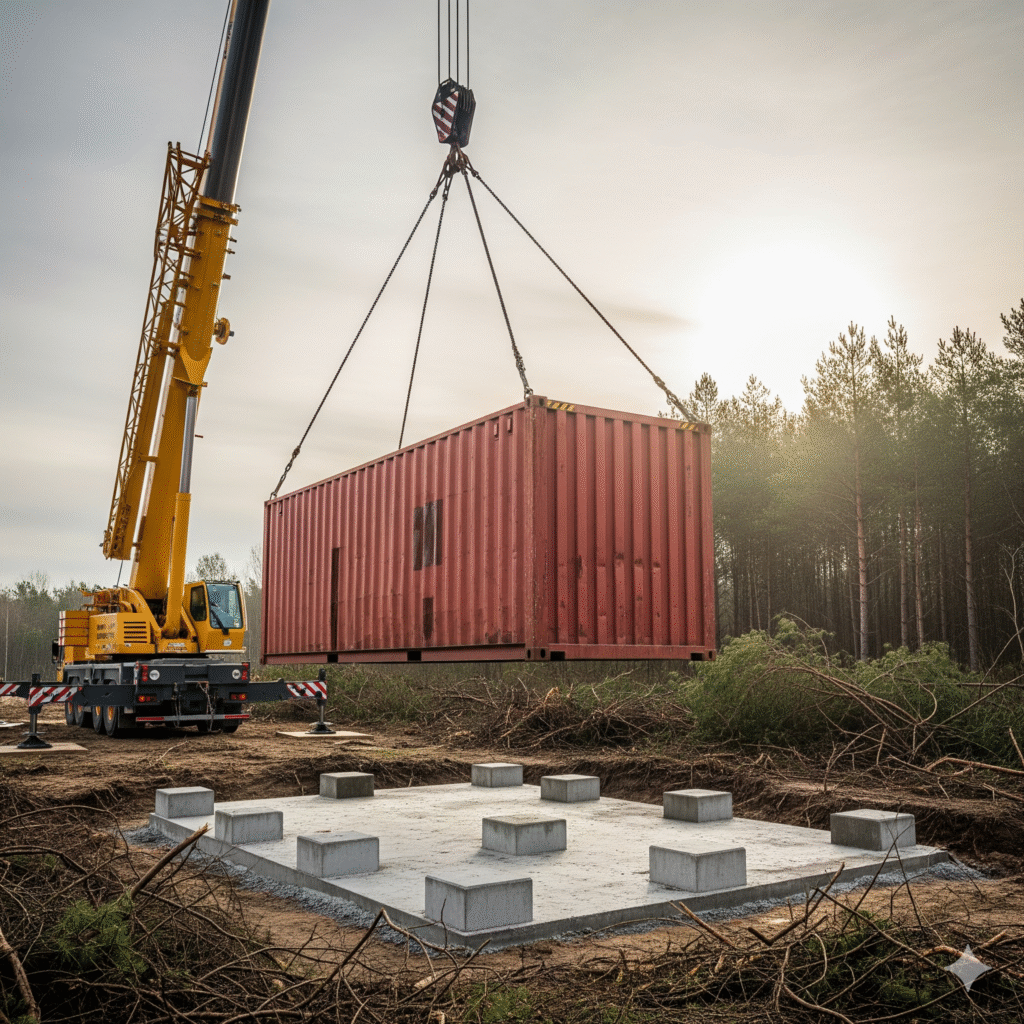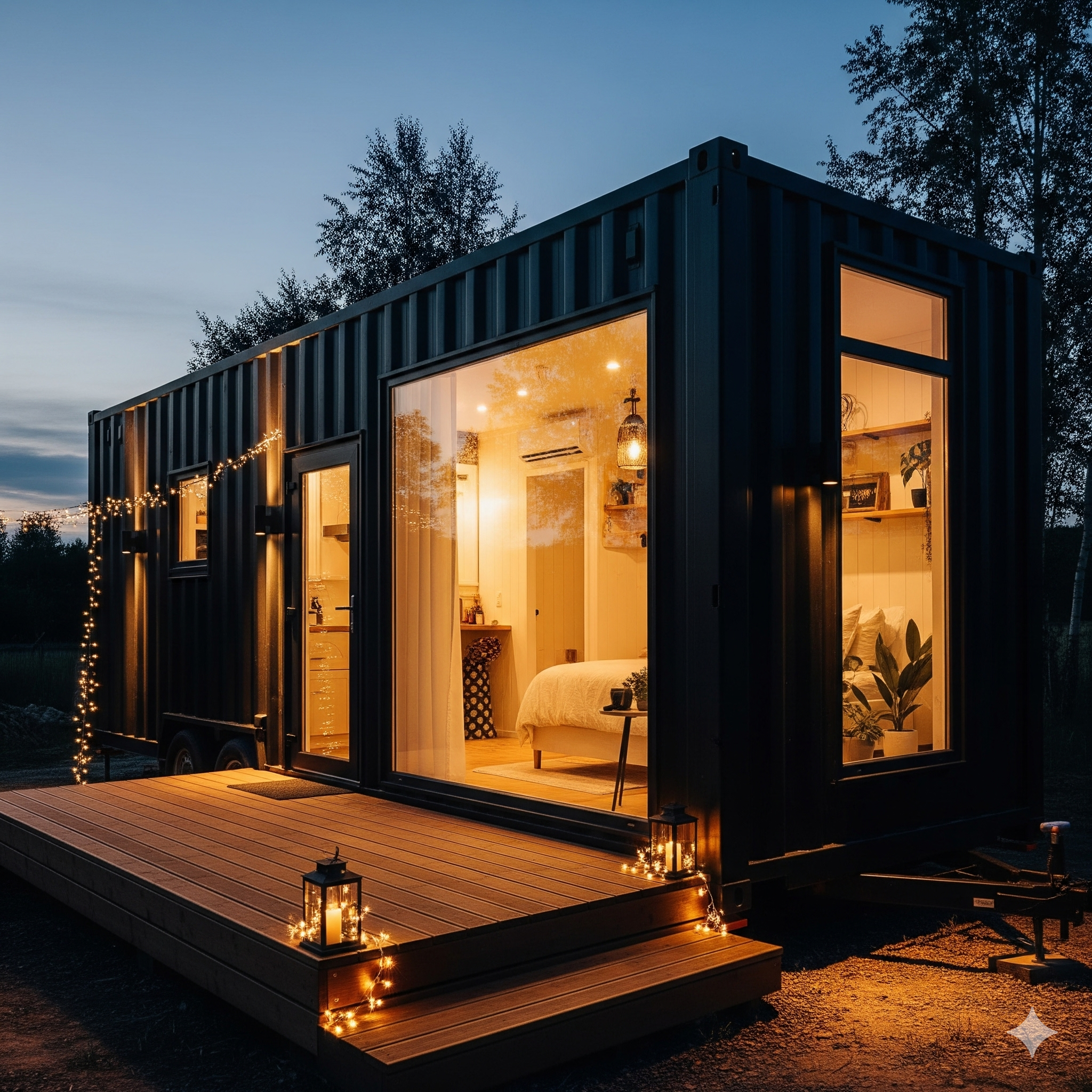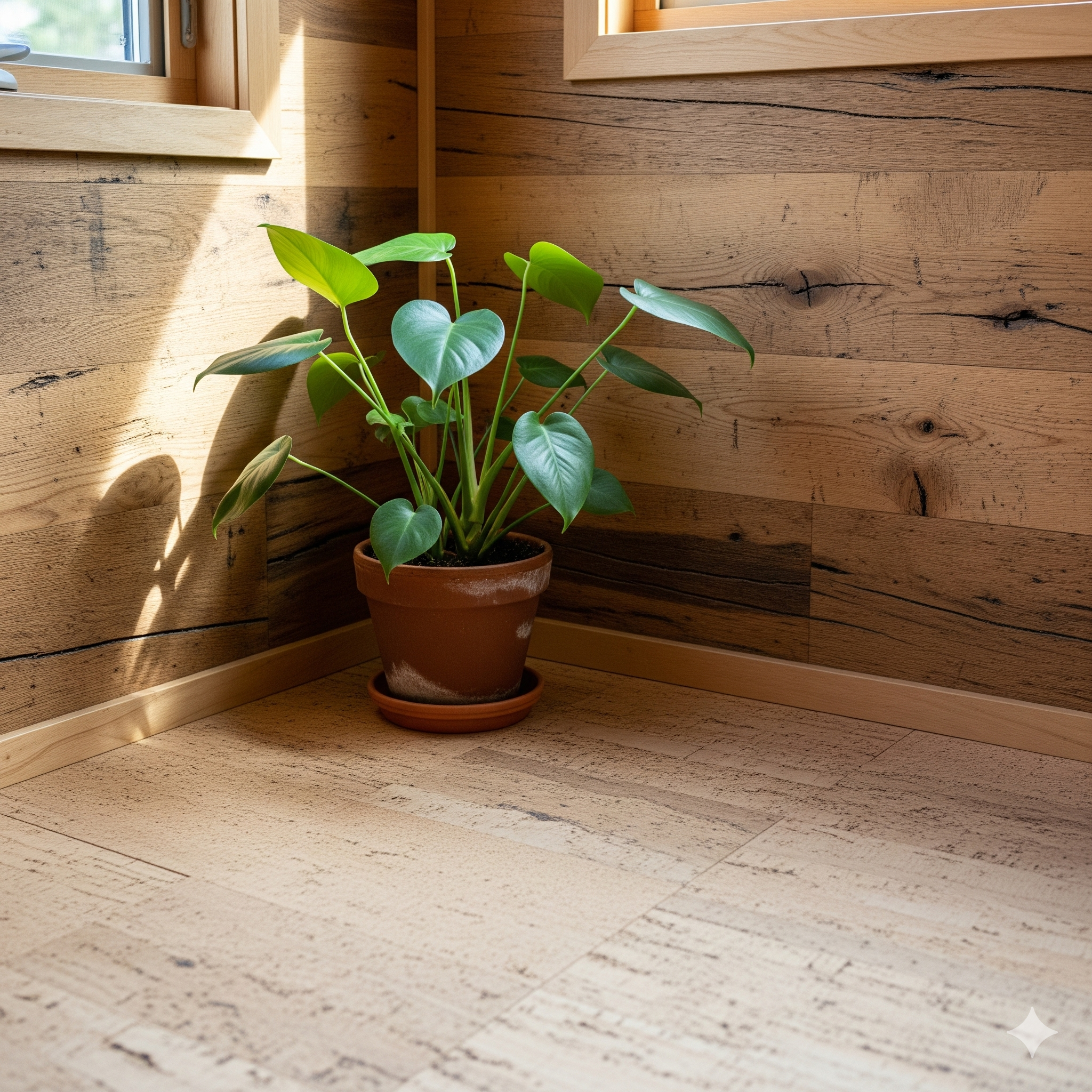Container Tiny House: Pros and Cons
Considering a container tiny house? Our guide explores the pros, cons, costs, and key realities of building with shipping containers to see if it’s right for you.
The Steel Box Dream: Is a Container Tiny House Right for You?
There’s an undeniable allure to the container tiny house. It’s a symbol of industrial-chic design, sustainability, and rugged durability. The idea of transforming a simple steel box—a vessel that has traveled the world—into a beautiful and functional home is captivating. They are often touted as a faster, cheaper, and stronger alternative to traditional building methods, making them a popular topic in the world of alternative dwellings and modular tiny homes. But behind the stunning photos and bold designs lies a series of unique challenges and important realities that every prospective builder must understand.
At NeatTinyHome.com, our goal is to provide you with the honest, comprehensive information you need to make the best decision for your lifestyle. A shipping container home is not a simple DIY project, and it’s certainly not the right fit for everyone. In this guide, we will take a balanced look at the real pros and cons of building a container tiny house. We’ll break down the costs, explore the critical construction hurdles, and help you answer the ultimate question: Is this steel box dream the right foundation for your tiny home journey?
The Allure: Pros of a Container Tiny House
The appeal of building with shipping containers is rooted in several key advantages that set them apart from conventional construction. When you’re considering a container tiny house, these are the benefits that often draw people in:
- Inherent Durability: Shipping containers are engineered to withstand extreme weather on the high seas, being stacked nine-high, and carrying tens of thousands of pounds. They are made from Corten steel, a material specifically designed to be weather and corrosion-resistant, as detailed by metal experts at Corten.com. This makes the basic shell of your home incredibly strong, secure, and resistant to fire, pests, and severe weather.
- Faster Construction Time: Because the main structure of your home is pre-built, the initial phase of construction can be significantly faster than framing a house from scratch. Once the container is delivered and placed on a foundation, you can immediately begin the interior work. This speed is a major advantage of modular tiny homes.
- Unique Modern Aesthetic: For those who love industrial, minimalist, or modern design, a container home offers a built-in aesthetic that is difficult to replicate. The corrugated steel walls and stark, rectangular form provide a unique canvas for architectural creativity. You can find stunning examples of this on design publications like Dezeen, which showcase incredible architectural feats.
The Reality: Cons and Key Challenges
While the pros are compelling, the cons of a container tiny house are significant and require serious consideration and budget allocation. I have seen many aspiring builders underestimate these challenges. The most significant hurdle is the narrow interior width. A standard container is 8 feet wide externally, but after you add insulation and interior walls, you are left with a living space that is only about 7 feet wide, which can feel very tunnel-like. Furthermore, the steel structure that makes them so strong also makes them difficult and expensive to modify. Cutting holes for windows and doors requires specialized tools and often structural reinforcement to maintain the container’s integrity. You also must address the very real possibility of chemical contamination from whatever the container was used to transport, which may require special paint sealants or replacing the original flooring. Finally, preventing rust, especially around new cuts and welds, is an ongoing maintenance concern that you must be prepared for, as outlined in guides for preparing containers for construction.
A Realistic Cost Comparison
One of the biggest myths about a container tiny house is that it is always a cheaper option. While the initial shell may be inexpensive (a used container can be purchased from marketplaces like Boxhub for a few thousand dollars), the costs for specialized labor and materials can add up quickly. The table below provides a rough comparison of potential costs for a DIY build.
| Cost Component | DIY Container Build (Est.) | Traditional Tiny Build (Est.) |
|---|---|---|
| Foundation | $3,000 – $8,000 | $5,000 – $10,000 |
| Structural Shell | $2,500 – $7,000 (Used Container) | $8,000 – $15,000 (Framing/Sheathing) |
| Welding & Cutting | $1,500 – $5,000 | N/A |
| Insulation | $2,000 – $6,000 (Spray Foam) | $1,500 – $4,000 (Various) |
| Interior Finishing | $15,000 – $35,000 | $15,000 – $35,000 |
As you can see, the costs can be comparable. The real expense in a container build comes from the specialized labor for metalwork and the absolute necessity of high-performance insulation. Because steel is a thermal bridge, it transfers heat and cold very efficiently. This means a container tiny house requires a continuous layer of insulation, typically closed-cell spray foam, to prevent massive energy loss and condensation issues. This type of insulation is more expensive than traditional fiberglass batts, a fact detailed by experts at the Spray Polyurethane Foam Alliance.
Final Thoughts: A Niche, Not a Shortcut
A container tiny house is an incredible architectural niche that can result in a stunning, durable, and unique home. However, it should be seen as a specific type of construction project with its own set of rules and challenges, not as a simple shortcut to a cheaper tiny home. It is best suited for those who specifically love the industrial aesthetic, have a solid budget for proper insulation and modifications, and are prepared for the unique construction process. If that sounds like you, then a container home might just be the perfect steel box to build your dreams in.
Is a Container Home for You?
What is the biggest appeal of a container tiny house to you? The durability, the style, or something else? What are your biggest concerns? Let us know in the comments!
Frequently Asked Questions
Do container homes get hot in the summer and cold in the winter?
They will if not insulated properly. Because steel is an excellent thermal conductor, a container home requires a continuous, high-performance insulation system (like closed-cell spray foam) to create a thermal break. Without it, the interior will be dangerously hot in the summer and frigid in the winter.
Are container homes legal?
This is highly dependent on local zoning laws. Some areas have embraced them as modular tiny homes, while others have strict codes that make them difficult to get approved. It is absolutely essential to check with your local planning and building department before you purchase a container.
Can you bury a shipping container to use as a bunker or basement?
No. Standard shipping containers are designed to hold weight on their corners and floor, not on their roof and sides. The pressure from the surrounding earth can easily cause the walls to bow and the roof to collapse. A container would need significant structural reinforcement to be buried safely.





Post Comment